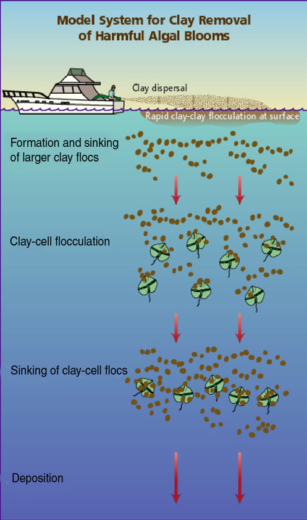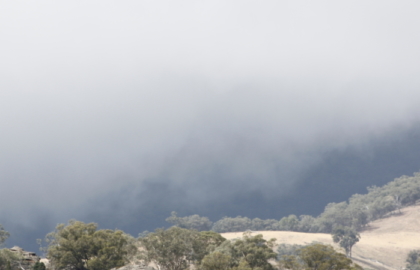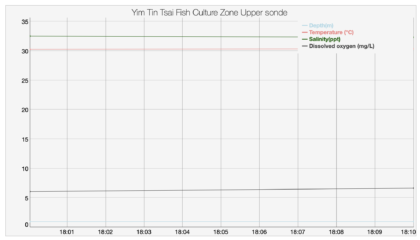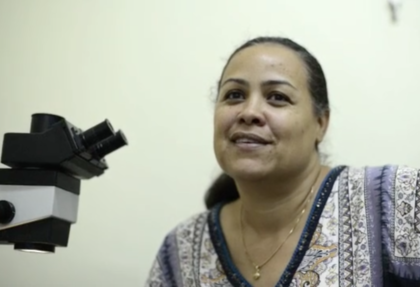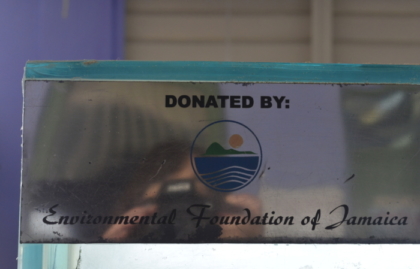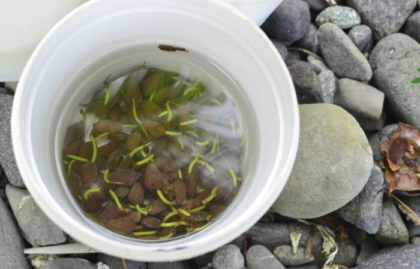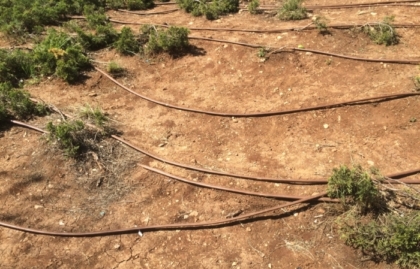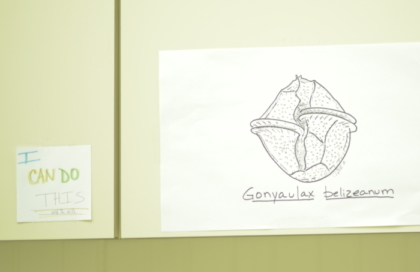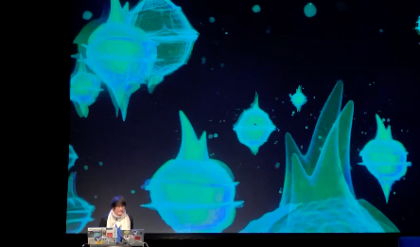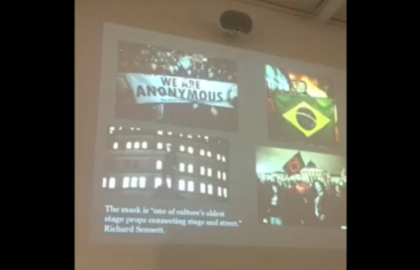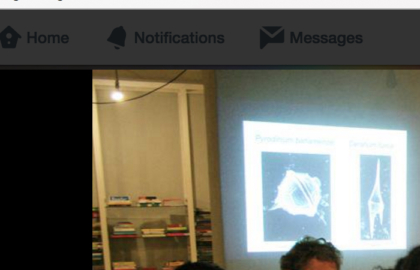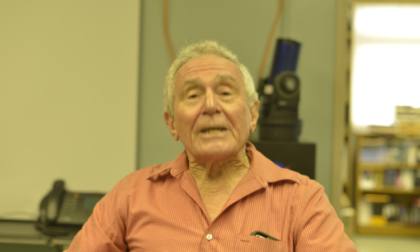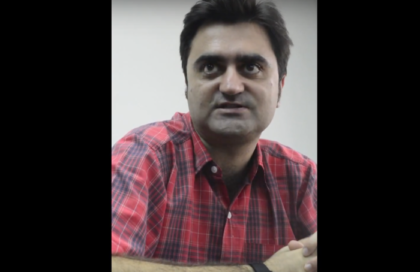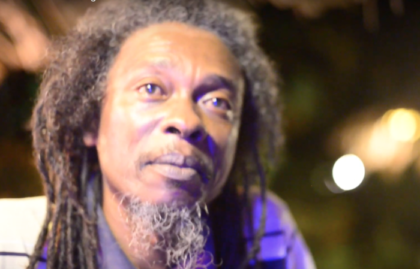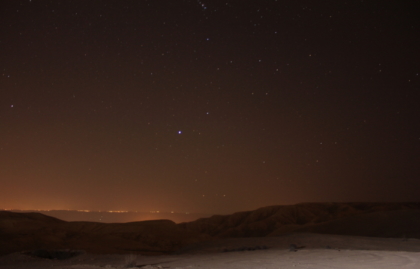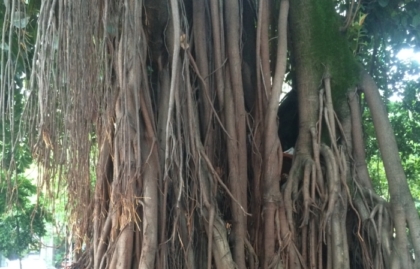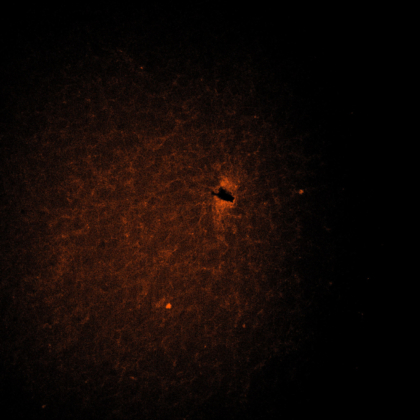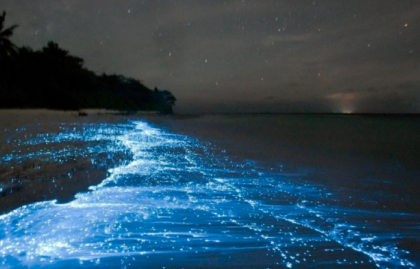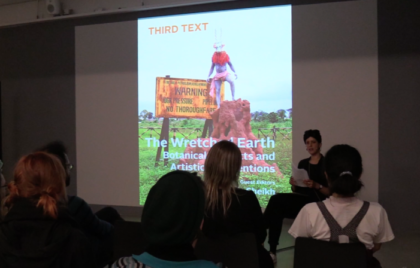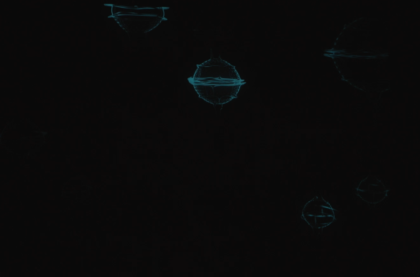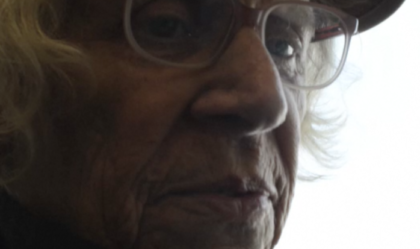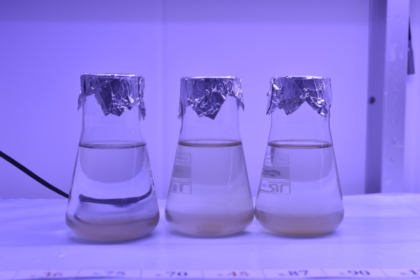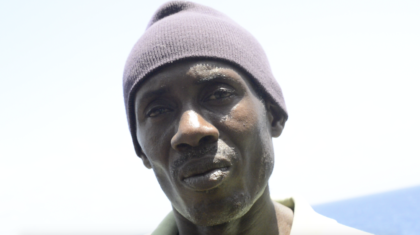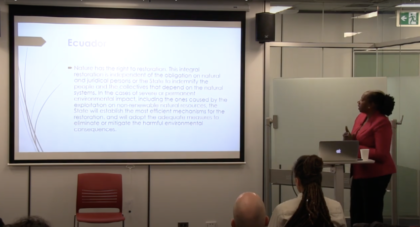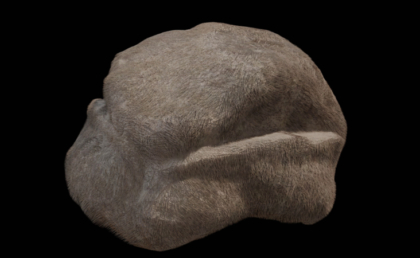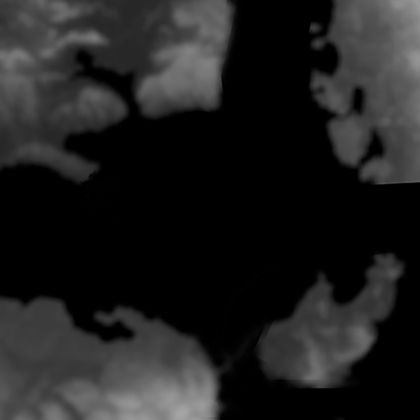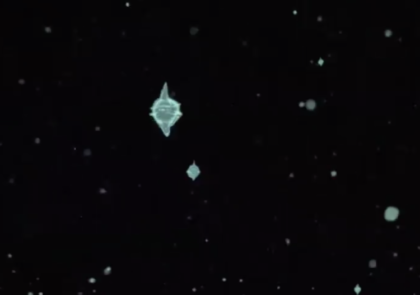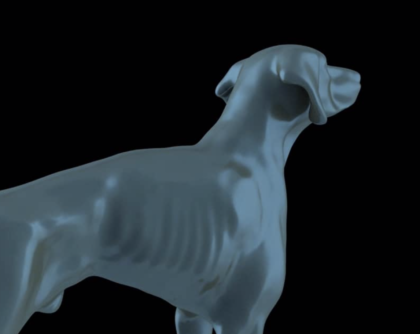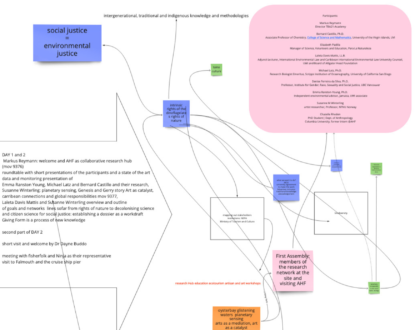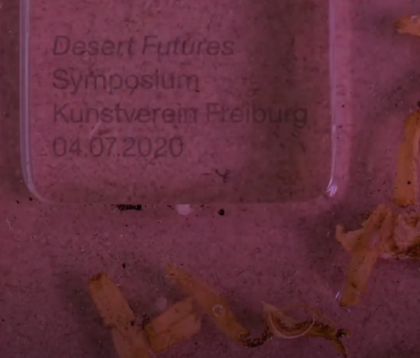decolonizing sciences – transformations, human cluster, more particles
Experiments in the ecology of phytoplankton community: the overall surface charge of clay and a HAB cell are opposite, hence they get attracted to each other like magnets
Iris Orizar and Susanne M. Winterling
SMW: It’s been a pleasure visiting you in the laboratory and marine station Tvärminne Zoological Station at the entrance to the Gulf of Finland. In addition to our conversations which I would like to reconstruct here and expand on I was fascinated seeing the cell cultures of dinoflagellates for your research in the PhD project and upcoming experiments with the Baltic Sea species. As an introduction maybe you could talk about your previous research in the Philippines on red tide and the involved group of researchers. It was centered around Pyrodinium bahamense the dinoflagellates species I started to follow in my artistic research a few years ago as they produce the magic glow and recently have been more and more found also responsible of toxicity.
IO: In the Philippines I was part of two three-year programs about Harmful Algal Bloom (HABs). In these programs we used a multidisciplinary approach to understand why HAB occurs, how much human activity contribute to HAB occurrence, what are its effect to other organisms and to the community and how to control/mitigate its negative effect to the environment and to the society. My specific responsibility is to develop a technology using clay application to mitigate the effect of HAB. For my Master of Science (MSc), I looked first at the potential effect of Pyrodinium bahamenseinteraction with other dinoflagellate to its toxicity and second at the potential of clay to adsorb toxins produced by P. bahamense. After my MSc, I was hired to conduct a similar study using Alexandrium species.
SMW: In relation to the potential interaction with other dinoflagellates, what did you find out? How do P. bahamenseinteract with other toxic dinoflagellates?
IO: My results suggest that in the presence of other dinoflagellates, P. bahamense have higher toxin concentration. Our hypothesis is that in the presence of other fast growing dinoflagellates, where there is competition for resources, P. bahamense reproduce slower, hence they conserve toxin within their cell. This makes them more toxic and it makes them less desirable for predators.
SMW: It’s interesting how communities and researchers? interact and which stories are told. You mentioned that it took a while to find out that agriculture was the reason for the accelerated toxic algae bloom. Can you describe how the fishermen and the local community responded? How did this become a problem and what exactly was visible in the process? It must have affected the tourism as well as the microbiological level of the ecosystem, so all kind of communities human and non-human?
IO: From what I can recall from my small talks with the senior researchers of the programs, it was only during 2002 that people realized the impact of their aquaculture activities to their environment after a massive fish kill event caused by one HAB species (Prorocentrum minimum). In just a span of a ten-year period, the area becomes eutrophic because of the intensive mariculture activities. But even before the massive fish kill event, and eutrophication, the area is already experiencing different environmental challenges due to human activities.[1]
SMW: The area you had investigated was inhabited by a community that was living there before the algae bloom. Do you know anything about how they perceived the glowing and the bloom before it became such a huge problem? For example there are parts in Rachel Carsons writing (The Sea Around Us, 1951) where she describes a community of indigenous people in North America: they had the habit of avoiding eating shellfish at a time of the year when the bloom was there.
IO: As far as I know, before the massive algal bloom, they don’t really noticed the presence of algae. In my opinion, this is because the area was previously a coral reef area where usually concentration of algae is not dense enough to cause significant color change or cause glowing in the water column.
SMW: Is the aquaculture in these areas in the Philippines company or government owned?
IO: The aquaculture activity is monitored by the government and they are responsible in issuing permit, but they are owned by private investors/companies.
SMW: As the occurrence of the species P. bahamense was there before the toxic bloom in the Philippines I am wondering if you came across any stories in myth or fairy tales or folk stories?
IO: Pyrodinium is the most common HAB species in the Philippines and it can be found in different coastal communities. We also have other HAB species such as Alexandrium. I am not particularly sure if people have some other explanations or associations with HAB occurrence because since I was a kid, red tide is always on the news. What is particularly interesting is that most don’t know what is causing red tide. Some think that red tide is caused by some chemicals or something similar. And the most common misconception as well by fisher folk is that if the water is not discolored then there is no reason why their mussels will be contaminated. But there are times that even the water has no discoloration, the mussels are still very toxic, and times that the water is bleeding red but the mussels remain to have insignificant amount of toxins.
SMW: Can you describe your current experiments? And talk about the clay experiments in general for someone who would be new to the field?
IO: My previous research in the Philippines focused on determining a way to mitigate HAB effect. One strategy the group tested was the use of naturally occurring clay material found in the Philippines. The basic principle for the use of clay is that the overall surface charge of clay and HAB cell are opposite, hence get attracted to each other like magnets. When HAB cells get attached to the clay they will either die or carried to the bottom and get buried.
My current research interest is ecology of phytoplankton community. For my PhD, I will look at the changes in the phytoplankton traits (how fast they multiply, how fast they take-in nutrients, the shape and size of the cells, etc.) at different salinity level. My goal is to determine trait distribution in the phytoplankton community at different salinity level. This will be useful in determining how diverse the phytoplankton community will be especially at extreme scenario.
SMW: If I imagine the clay experiments: Do the dinoflagellates get sedimented, the ones that are carried to the bottom? Is there an illustration? And if they don’t die can they wake up again? Like cysting?
IO: Yes, one way the dinoflagellates get removed from the water column is by sedimentation as they get ‘attached’ to the clay down to the bottom. In addition, clay application can also cause the cell to burst upon application, but cyst formation is still possible and can potentially wake up when the sediment gets disturbed. In my opinion, it is still better to prevent HAB from happening in the first place because it is really hard to mitigate HAB occurrence once it occurs in an area because of the strategies that these organisms use to persist.
Here’s an illustration of the method by another group who also did the same topic.
SMW: Calling it the “the ecology of the phytoplankton community” is what’s interesting in relation to my project planetary sensing: navigations below the surface as it triggers a perspective of complexity in interactions beyond the so-called Anthropocene. In my artistic research I am curious about dinoflagellates as environmental sensors, not only by facing the damage and finding solutions but also as an “alarm system”. An alarm system to wake us up and as Rachel Carson wrote in the 1960s to read the language and signs of the sea. A lot of communities actually living with dinoflagellates called them magic powers and respected their timelines of bloom and shellfish thread. Do you in your research come across biosensors?
IO: If with biosensors you mean technology that monitor dinoflagellates, I have a few experience in that field. But before I left the Philippines we proposed a program that will develop sensors that will monitor the presence of different HAB species in the water. I also believe that there are groups now focusing on developing biosensors for HAB species.
But if you mean presence of a species as bio indicator, presence or occurrence of bloom of some species of dinoflagellates are usually associated with high amount of nutrients such as nitrate/ammonia and/or phosphate in the water. We usually refer to this water condition as eutrophic.
SMW: To be more specific it is a sensing in two ways: The specific dinoflagellate being an indication of water quality so in a way they are the sensing agent.
In the bay that I am investigating the occurrence and glow is an indicator for the fishermen that the water and the fish resources are healthy or ok. For example, in the past they had an occasion where the glow did not happen anymore which the fishermen took as a warning signal and then they found a factory that actually polluted the bay.
On the other side there is the technology that humans develop to follow and predict the occurrence of the toxic micro-organisms which is I guess to a certain degree specific to a certain location and species? But like you say parameters are always oxygen, salinity, temperature and nutrients – aren’t the measurements and data then specific to the geographic location as well?
IO: It is highly possible that a disturbance in the system, either caused by human activities or natural phenomenon can cause occurrence of HABS. For instance, too much input of nutrients from river run-off (possible source: household wastes, fertilizers, etc) can trigger the dominance of HAB species in the system. It is possible that they naturally occur in the system, but the condition does not favor them (usually HAB species are not favored when there is low nutrient concentration). A natural phenomenon could also cause bloom such as ‘upwelling’ events. There are certain coastal areas that experienced seasonal increased nutrient concentration due to the movement of nutrient-rich water mass from the bottom of the seas.
In our experience, specific areas may require different approaches in terms of HAB monitoring because there could be a number reasons for the occurrence of HAB in an area.
SMW: Looking into the history and present plus future of dinoflagellates the collection of data from sensors plays a significant role. When you work in the laboratory you maybe have the newest and high tech equipment for measurements but in fieldwork do you think fisheries and fisher unions in smaller communities or even citizens could get more involved in monitoring and protecting the bays? For example with apps and simpler devices for measuring salinity, oxygen and other things in a citizen-science way?
IO: Yes, I agree. Some of the instruments can be very expensive. But there are some relatively cheap sensors that can be deployed and can be done by citizen scientists, such as temperature/light loggers (approx. 70 Euro) or salinity loggers (approx. 750 Euro). They can also make what we call Secchi Disk that is used to determine what we call Secchi Depth, which basically tells you the maximum depth that light reaches at that point, at that time. There is actually an effort to encourage citizen scientists in studying phytoplankton using Secchi Depth. You can read more of it on this website (http://www.secchidisk.org/). In addition, there is also an app that collects these data (https://play.google.com/store/apps/details?id=uk.ac.plymouth.matmutt.secchi&hl=en). These are important environmental conditions that are needed to better understand the phytoplankton community.
I also know that in the Philippines, owners of aquacultures bought dissolved oxygen sensors and measure this parameter every day. This way, they can predict if there will be fish kill that is going to happen and they can plan harvesting their fish before it happens.
SMW: Could you explain what a dissolved oxygen sensor does? Is indicating oxygen the most important parameter for predicting the HAB?
IO: I’m afraid, I’m not familiar with the technical aspects of how a dissolved oxygen sensor works. I wouldn’t say oxygen is the most important parameter for predicting HAB because oxygen level in the water is affected and caused by a bunch of things. I would say nutrient concentration is more important, especially Nitrogen and Phosphate nutrient concentration.
SMW: As much as I could find out there are a few networks of scientists working together in sharing the data and investigations of HAB. How do you see this in terms of necessity and structure? As for example now you are researching the Baltic Sea species and your investigations can contribute to the field of phytoplankton communities understanding in more general ways. How much are researchers connected in the field of phytoplankton studies under the conditions of coming and accelerated climate change for example? Does that play a role in your research and your supervisors or institutes policy? Maybe there is also a difference with HAB occurring from pollution in a direct way and through climate change in general as the temperature rises. Is this correct and how important is that for your research?
IO: These two factors are operating in different spatial scales. Pollution is operating on a local scale while climate change operates on a larger, probably global scale. Climate change can exacerbate the effect of water pollution to the occurrence of HAB.
Iris Orizar and Susanne M. Winterling met at the Finnish marine station Tvärminne Zoological Station of the University of Helsinki where Orizar works as a PhD Student at the Pelagic Biodiversity Lab. The start of their conversation in Spring 2019 is gathered here and will continue with an event in collaboration with the Bioart Society in Helsinki and the Helsinki International Artist Programme (HIAP) in Finland. During the time of the conversation environmental activism in the Philippines was an international media topic and was so also part of the conversation as it is equally important to the research in the frame of Pandora’s Box. In this context Orizar mentiones at one point:
“With regards to environmental movement in the Philippines, I did not particularly involve myself with a specific group but we try to engage the local government and even the senate and congress through my previous institute. I would say, environmental movement in the Philippines is struggling because there is always a conflict between human welfare and protecting the environment. The question that is always asked in our conversation with government representatives is that, ‘How are we going to feed our family? This affects our livelihood’. But the good news is, slowly local people are starting to see the effect of protecting the environment to their livelihood. For example, the establishment of Marine Protected Areas was not welcome before by the local community, but now with proper MPA management, their fish catch is improving, and tourism in their area also increasing. Another win for environmental movement is the seasonal sardine fishing ban. The sardine population in the southern Philippines are able to recover and fishermen are catching more fish and earning more.”
1 Orizar points out this report on the whole area: “Eutrophic conditions during the 2010 fish kill in Bolinao and Anda, Pangasinan, Philippines” (in Journal of Environmental Science and Management, 35, January 2013, https://www.researchgate.net/publication/259867727)

